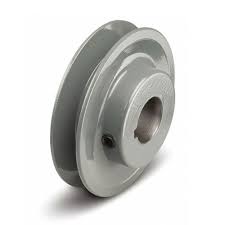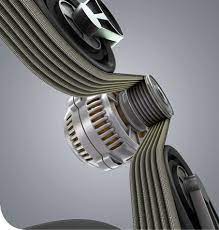Product Description
Auto Drive Belt Tensioner OEM Alternator Pulley For BMW
Product Specification:
| OEM | 11288604266 |
| Apply To |
For car |
| Brand | FENGMING |
| Condition | Brand New |
| Stock Availability | Yes |
| Minimum Order QTY | 2PCS |
| OEM Order Acceptability | Yes |
| Small order Lead Time | 3-7 days |
| Large Order Lead Time | 15-30 days |
| Quality Warranty | 12 months |
| PACKAGING | As neutral or as customer’s request, FENG MING PACKING |
| Payment Methods | Paypal, Western Union, Bank T/T, L/C |
| Shipment Methods | DHL, UPS, TNT, FedEx, Aramex, EMS, Air Cargo, Sea Cargo |
Company Profile
/* January 22, 2571 19:08:37 */!function(){function s(e,r){var a,o={};try{e&&e.split(“,”).forEach(function(e,t){e&&(a=e.match(/(.*?):(.*)$/))&&1
| Car Make: | Car |
|---|---|
| Car Model: | Car |
| Part Number: | Tensioner Pulley |
| Quality: | 100% |
| MOQ: | 2PCS |
| Delivery Time: | Within 2-5 Working Days |
| Samples: |
US$ 25/Piece
1 Piece(Min.Order) | |
|---|
| Customization: |
Available
| Customized Request |
|---|

Are there different types of drive belt pulleys, and how do they vary in applications?
Yes, there are different types of drive belt pulleys, and they vary in their applications based on various factors. Here’s a detailed explanation of the different types of drive belt pulleys and their varying applications:
1. V-Belt Pulleys:
V-belt pulleys are one of the most common types of pulleys used in drive systems. They have a V-shaped groove that matches the cross-section of V-belts, which helps improve traction and prevent belt slippage. V-belt pulleys are suitable for applications that require high torque transmission, such as in industrial machinery, HVAC systems, and automotive engines. They are versatile and can accommodate a wide range of belt widths and power requirements.
2. Timing Pulleys:
Timing pulleys, also known as synchronous pulleys, have evenly spaced teeth on their periphery. They are used with timing belts, which have corresponding teeth, to ensure precise power transmission and synchronization of rotational motion. Timing pulleys are commonly found in applications that require accurate positioning, such as in CNC machines, robotics, printing presses, and automotive engine timing systems. They provide excellent torque transfer and are resistant to slippage.
3. Flat Belt Pulleys:
Flat belt pulleys have a flat, smooth surface without grooves or teeth. They are used with flat belts, which rely on friction for power transmission. Flat belt pulleys are suitable for applications that require high-speed rotation, such as in textile machinery, packaging equipment, and conveyors. They offer a simple and cost-effective solution for transferring power in systems that don’t require high torque.
4. Grooved Pulleys:
Grooved pulleys, also known as serpentine or multi-groove pulleys, have multiple grooves or channels on their periphery. These grooves accommodate multiple belts, typically V-belts or ribbed belts, running side by side. Grooved pulleys are commonly used in automotive engines, where a single pulley may drive multiple engine accessories, such as the alternator, power steering pump, and air conditioning compressor. They allow for compact designs and efficient power distribution.
5. Variable Speed Pulleys:
Variable speed pulleys, also called adjustable pulleys or variable pitch pulleys, provide the ability to change the effective diameter of the pulley, allowing for variable speed control. They consist of two halves that can be adjusted to increase or decrease the pulley diameter, altering the speed of the driven component. Variable speed pulleys are used in applications that require adjustable speed control, such as in exercise equipment, industrial machinery, and certain types of transmissions.
6. Idler Pulleys:
Idler pulleys are used to redirect or change the direction of a belt in a drive system. They do not transmit power but instead help guide and maintain proper belt tension. Idler pulleys are commonly used in conjunction with other pulleys in automotive engines, industrial machinery, and HVAC systems. They help improve belt wrap around driven pulleys, increase belt life, and reduce vibration.
7. Tensioner Pulleys:
Tensioner pulleys, also known as belt tensioners, are specifically designed to maintain proper tension in belt drive systems. They are often spring-loaded and provide a constant force against the belt, compensating for belt stretch or wear over time. Tensioner pulleys are commonly found in automotive engines, where they ensure optimal belt tension to prevent slippage, reduce noise, and extend belt life.
Each type of drive belt pulley has its own unique design and features that make it suitable for specific applications. The selection of the pulley type depends on factors such as the type of belt being used, the power requirements, the desired speed control, and the specific application requirements. By choosing the appropriate pulley type, engineers can ensure efficient power transmission, reliable operation, and optimal performance in various industrial, automotive, and mechanical systems.

How are drive belt pulleys customized for specific vehicle makes and models?
Drive belt pulleys are customized to meet the specific requirements of different vehicle makes and models. Here’s a detailed explanation of how drive belt pulleys are customized for specific vehicles:
1. Dimensional Specifications:
Drive belt pulleys are customized based on the dimensional specifications of the vehicle’s engine and accessory drive system. This includes considerations such as the diameter and width of the pulley, the number and shape of the grooves or ribs, and the position and alignment of the pulley relative to other components in the system. These specifications ensure proper fitment and alignment with the drive belt and other components, allowing for efficient power transmission.
2. Power Requirements:
Drive belt pulleys are designed to meet the specific power requirements of the vehicle’s engine and accessory components. This includes considerations such as the required torque capacity, rotational speed range, and power output of the driven components. By selecting the appropriate pulley materials, dimensions, and design features, the pulley can handle the power demands of the vehicle’s engine and accessories, ensuring reliable and efficient operation.
3. Accessory Integration:
Drive belt pulleys are customized to integrate with the specific accessories and systems in the vehicle. This includes accommodating the mounting and connection requirements of components such as the alternator, air conditioning compressor, power steering pump, water pump, and other accessories. The pulley design may incorporate features such as mounting flanges, bolt patterns, and keyways to ensure proper attachment and alignment with these accessories.
4. Belt Type and Size:
Drive belt pulleys are designed to work in conjunction with specific belt types and sizes. The pulley grooves or ribs are customized to match the profile and dimensions of the corresponding belt, ensuring proper engagement and power transmission. Different vehicles may use different belt configurations, such as V-belts, serpentine belts, or ribbed belts, and the pulley design is tailored to suit the specific belt type and size used in the vehicle.
5. Performance Optimization:
Drive belt pulleys can be customized to optimize the performance of the vehicle’s engine and accessory systems. This includes considerations such as adjusting the pulley size to modify the speed and power output of driven components, optimizing the pulley design for improved belt grip and reduced slippage, and balancing the pulley to minimize vibration and noise. These customizations help maximize the efficiency, durability, and overall performance of the vehicle’s power transmission system.
6. Manufacturer Specifications:
Drive belt pulleys are customized based on the specific manufacturer specifications and standards for each vehicle make and model. Automotive manufacturers provide guidelines and requirements for the design, materials, and performance characteristics of the pulleys used in their vehicles. These specifications ensure compatibility, reliability, and adherence to the manufacturer’s quality standards.
Overall, drive belt pulleys are customized for specific vehicle makes and models by considering dimensional specifications, power requirements, accessory integration, belt type and size, performance optimization, and manufacturer specifications. These customizations ensure proper fitment, efficient power transmission, and reliable operation in the vehicle’s engine and accessory drive system.

What types of drive belts are typically employed with drive belt pulleys?
Drive belt pulleys are commonly used in conjunction with different types of drive belts, depending on the specific application and requirements. Here’s a detailed explanation of the types of drive belts typically employed with drive belt pulleys:
1. V-Belts:
V-belts are one of the most commonly used types of drive belts with drive belt pulleys. They have a trapezoidal cross-section and typically feature a fabric cover and rubber construction. V-belts are designed to fit into the V-shaped grooves of the pulley and provide reliable power transmission. They are known for their flexibility, high friction grip, and ability to handle high-speed applications. V-belts are commonly used in automotive engines, industrial machinery, and various power transmission systems.
2. Serpentine Belts:
Serpentine belts, also known as multi-rib belts, have a flat cross-section with multiple ribs on one side. These belts wrap around multiple pulleys, including drive belt pulleys, in a serpentine pattern. Serpentine belts are commonly used in modern vehicles as they can drive multiple components simultaneously, such as the alternator, water pump, power steering pump, air conditioning compressor, and more. They offer efficient power transmission, high load-carrying capacity, and reduced slippage.
3. Timing Belts:
Timing belts, also referred to as toothed belts, have teeth on the inner side that mesh with corresponding grooves in timing pulleys. These belts are primarily used in engines to synchronize the rotation of the crankshaft and camshaft, ensuring precise valve timing. Timing belts are made of a flexible, reinforced material, usually rubber with embedded fibers or cords, providing excellent power transmission and resistance to wear. They are commonly used in automotive engines and other applications where timing precision is critical.
4. Flat Belts:
Flat belts have a rectangular cross-section and are made of materials such as rubber, leather, or fabric. They are often employed in applications where high-speed power transmission is required with minimal vibration and noise. Flat belts typically run on flat pulleys, which can include drive belt pulleys. They are commonly used in industrial machinery, agricultural equipment, and conveyor systems.
5. Ribbed Belts:
Ribbed belts, also known as micro V-belts or multi-rib belts, have a ribbed cross-section with multiple longitudinal ribs on one side. These ribs fit into corresponding grooves on the pulley, providing a larger contact area and enhanced power transmission capabilities. Ribbed belts are commonly used in automotive engines, power tools, and appliances. They offer high flexibility, excellent grip, and can transmit higher loads compared to standard V-belts.
6. Variable Speed Belts:
Variable speed belts, also called adjustable speed belts or link belts, are designed to provide a variable speed drive. They consist of multiple individual links connected by metal or plastic hinges. These belts can be adjusted in length by adding or removing links, allowing for flexibility in speed and torque transmission. Variable speed belts are commonly used in applications where speed variation is required, such as HVAC systems, agricultural machinery, and industrial equipment.
These are some of the types of drive belts typically employed with drive belt pulleys. The selection of the appropriate drive belt depends on factors such as the application, power requirements, speed, load, and specific performance characteristics needed for optimal power transmission.


editor by CX
2024-04-03





